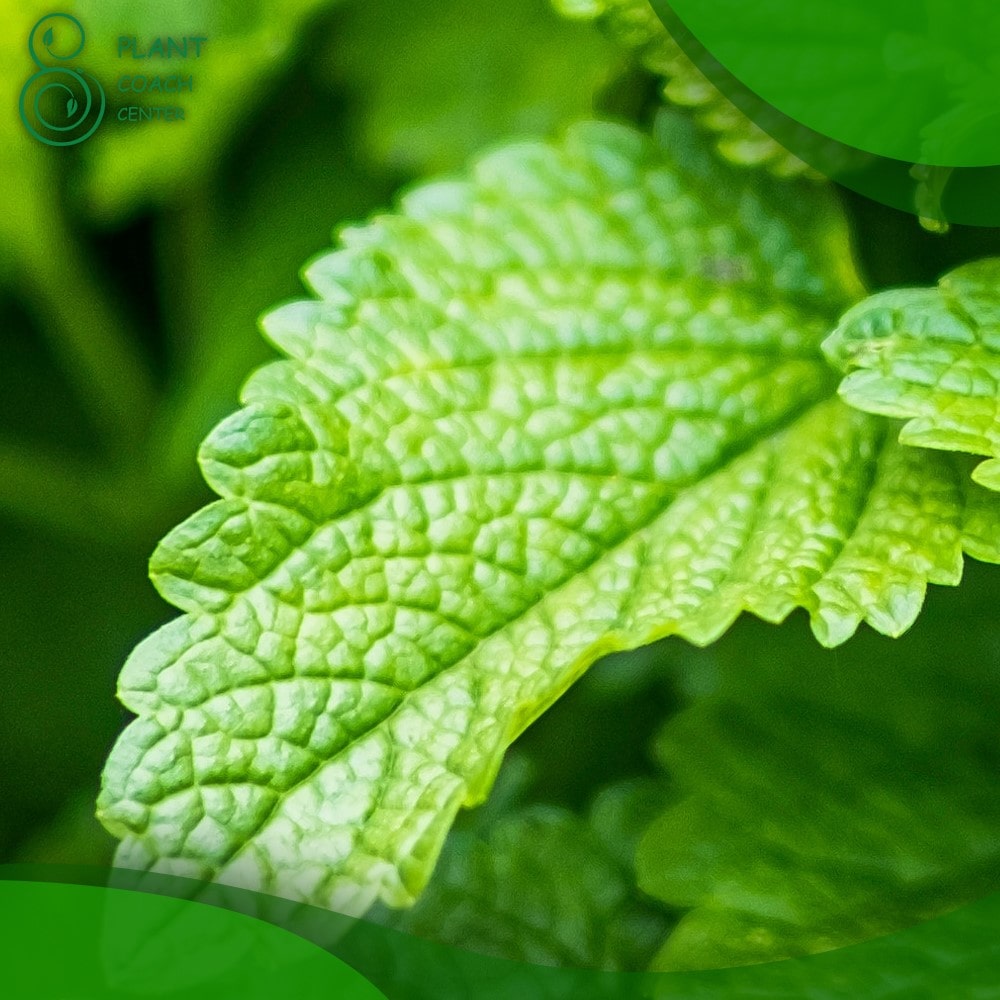When to Plant Lemon Balm
Welcome to the ultimate guide on growing and cultivating lemon balm, a versatile herb with a delightful lemony aroma and a variety of uses. In this comprehensive article, we will explore the world of lemon balm, discuss the importance of plant coaching, and provide detailed insights into determining the best time to plant lemon balm.
Whether you’re a seasoned gardener or a beginner, this guide will equip you with the knowledge and techniques to successfully grow and care for lemon balm. For more valuable resources and guidance on plant care, be sure to visit [Plant Coach Center](https://www.plantcoachcenter.com).
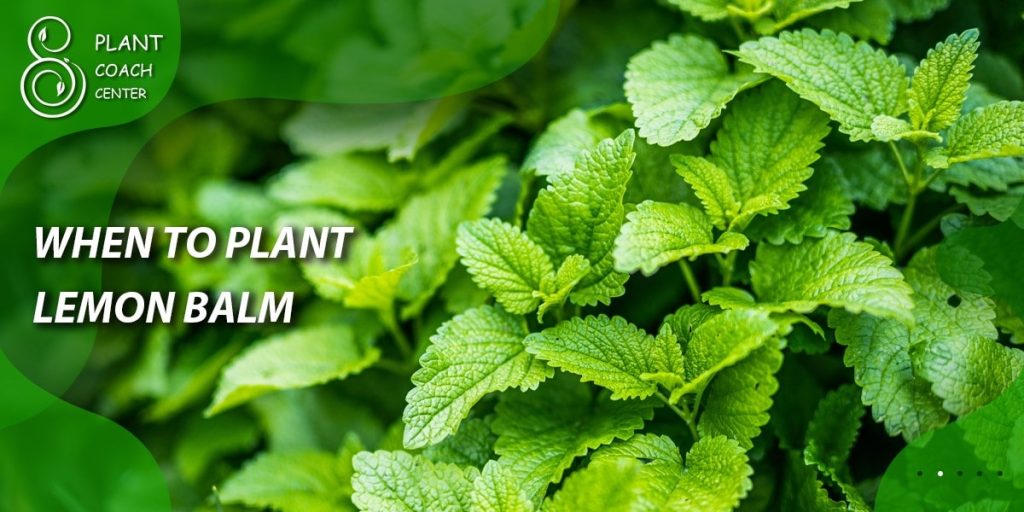
1. The Fascinating World of Lemon Balm
1.1 What is Lemon Balm?
Lemon balm, scientifically known as Melissa officinalis, is a perennial herb belonging to the mint family (Lamiaceae). It features vibrant green leaves with a distinctive lemon fragrance and flavor, making it a popular choice for culinary, medicinal, and aromatic purposes.
1.2 Historical Significance and Traditional Uses
Lemon balm has a rich historical background, with records of its use dating back to ancient civilizations. It was treasured for its soothing properties and was often employed to calm the mind and promote relaxation. Over the centuries, lemon balm has been utilized in various cultural practices, herbal remedies, and culinary traditions.
1.3 Benefits of Growing Lemon Balm
– Versatile Culinary Herb: Lemon balm adds a refreshing, citrusy flavor to a wide range of dishes, including salads, teas, desserts, and cocktails.
– Medicinal Properties: Lemon balm possesses numerous therapeutic properties, such as aiding digestion, reducing stress, promoting sleep, and soothing skin irritations.
– Pollinator Attraction: The fragrant flowers of lemon balm attract bees and other beneficial pollinators, making it a valuable addition to any garden.
– Ornamental Appeal: With its lush foliage and pleasant scent, lemon balm can enhance the aesthetic appeal of both indoor and outdoor spaces.
The Role of Plant Coaching in Successful Gardening
Plant coaching plays a vital role in achieving gardening success. By understanding the principles of plant coaching, you can provide the optimal growing conditions and care needed for lemon balm to thrive. Here are some key points to consider:
– Knowledge and Guidance: Plant coaching involves acquiring knowledge about the specific plant’s requirements, growth patterns, and potential challenges. This knowledge helps you make informed decisions and take appropriate actions.
– Tailored Care: Each plant has unique needs, and plant coaching helps you provide individualized care based on factors such as sunlight, water, nutrients, and pruning requirements.
– Problem-Solving: Plant coaching equips you with problem-solving skills to address issues such as pests, diseases, nutrient deficiencies, and environmental stressors that may affect lemon balm’s growth.
– Long-Term Planning: Through plant coaching, you can develop a long-term plan for your lemon balm, considering its growth trajectory, potential propagation, and future uses.
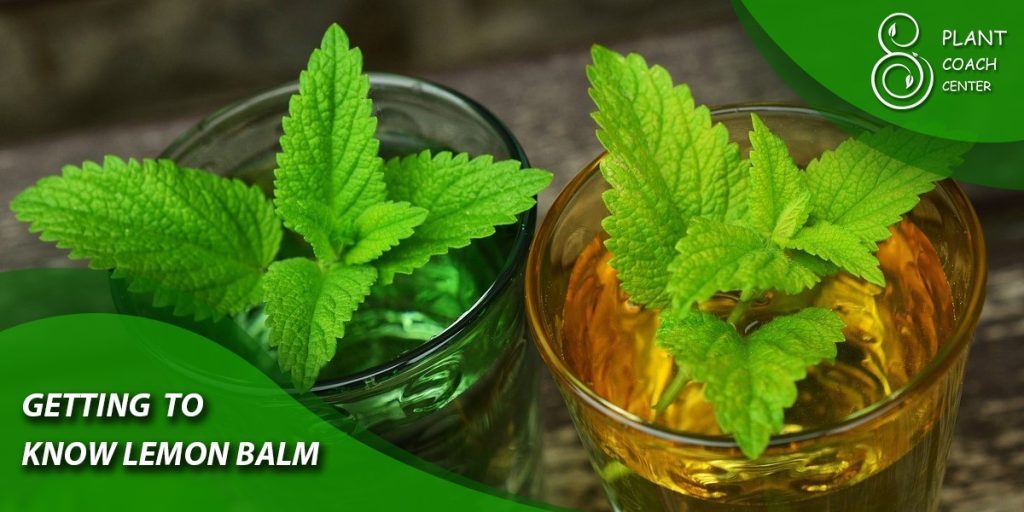
Getting to Know Lemon Balm
To cultivate lemon balm successfully, it is essential to familiarize yourself with its various aspects. Let’s explore the lemon balm plant in detail:
3.1 Lemon Balm Varieties and Their Characteristics
Lemon balm is available in several cultivars, each with its unique characteristics. Some popular varieties include:
– Common Lemon Balm: The standard variety with bright green leaves and a strong lemon fragrance.
– Variegated Lemon Balm: This variety displays leaves with green and yellow variegation, adding visual interest to the plant.
– Lemon Balm ‘Aurea’: Known as golden lemon balm, it features vibrant yellow leaves that brighten up the garden.
3.2 Ideal Growing Conditions for Lemon Balm
Lemon balm thrives under specific environmental conditions. Consider the following factors when creating an ideal growing environment:
– Sunlight: Lemon balm prefers full sun or partial shade, thriving in 4-6 hours of direct sunlight per day.
– Temperature: It grows best in moderate climates with temperatures between 60-75°F (15-24°C).
– Soil: Well-draining soil rich in organic matter is ideal for lemon balm. A pH level between 6.0 and 7.5 is optimal.
– Watering: Lemon balm requires regular watering, ensuring the soil remains consistently moist but not waterlogged.
3.3 Understanding Lemon Balm’s Growth Cycle
To effectively care for lemon balm, it’s important to understand its growth cycle and the corresponding care requirements. The growth cycle typically involves the following stages:
– Germination: Lemon balm seeds germinate within 7-14 days under optimal conditions.
– Seedling Stage: At this stage, the young lemon balmplant starts developing its true leaves and requires gentle care to promote healthy growth.
– Vegetative Growth: Lemon balm exhibits vigorous growth during this stage, developing a dense foliage canopy.
– Flowering and Seed Production: As the plant matures, it produces clusters of small, white or pale yellow flowers, attracting pollinators. These flowers eventually give way to seeds for propagation or future harvesting.
Understanding the growth cycle helps you time your planting, care, and harvesting activities appropriately, ensuring the best outcomes for your lemon balm plants.
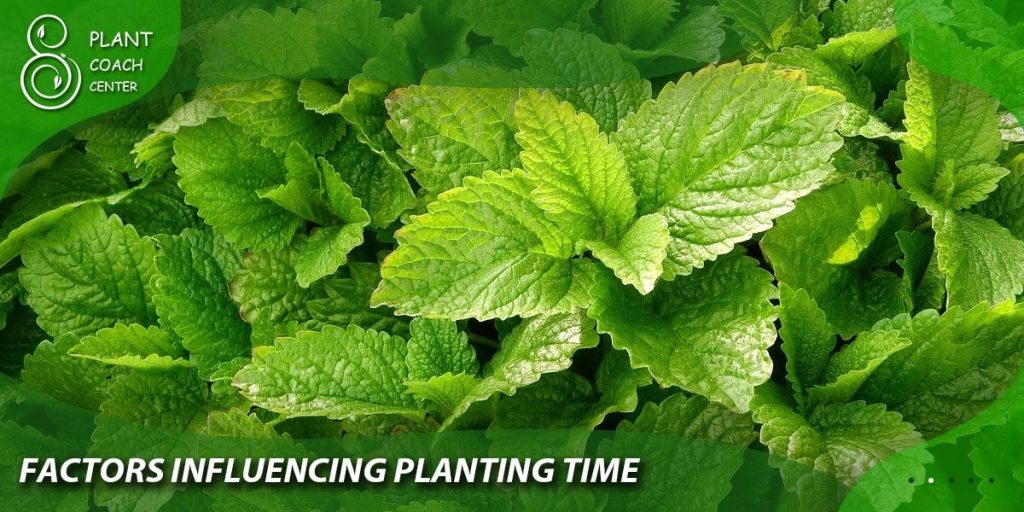
Factors Influencing Planting Time
Determining the optimal time to plant lemon balm is crucial for its successful establishment. Several factors influence the planting time, including:
4.1 Climate Considerations and Hardiness Zones
Lemon balm’s planting time depends on the climate and hardiness zone in which you reside. Hardiness zones provide a useful reference for determining the suitable planting window based on average frost dates and temperature ranges.
– Consult your local agricultural extension office or refer to online resources to identify your hardiness zone.
– In colder climates, it is advisable to start lemon balm indoors or wait until the threat of frost has passed before planting it outdoors.
4.2 Soil Requirements and Preparation
Preparing the soil before planting is essential to provide the right conditions for lemon balm’s growth and establishment.
– Conduct a soil test to assess its pH level and nutrient content. Lemon balm thrives in slightly acidic to neutral soil conditions.
– Amend the soil with organic matter, such as compost or well-rotted manure, to improve its fertility, drainage, and moisture retention.
4.3 Sunlight and Shade Requirements
Lemon balm has specific sunlight requirements to flourish and produce abundant foliage and essential oils.
– Choose a planting location that receives at least 4-6 hours of direct sunlight daily.
– In hot climates, partial shade during the hottest part of the day can help prevent leaf scorching and maintain optimal plant health.
4.4 Watering and Irrigation Needs
Proper watering is crucial during the early stages of lemon balm’s growth to support establishment and root development.
– Water the plants thoroughly after planting and monitor the soil moisture regularly.
– Provide consistent moisture, ensuring the soil remains evenly moist but not waterlogged.
– Adjust the frequency and amount of watering based on environmental conditions and the plant’s moisture requirements.
Factors Influencing Planting Time
Starting Lemon Balm from Seeds
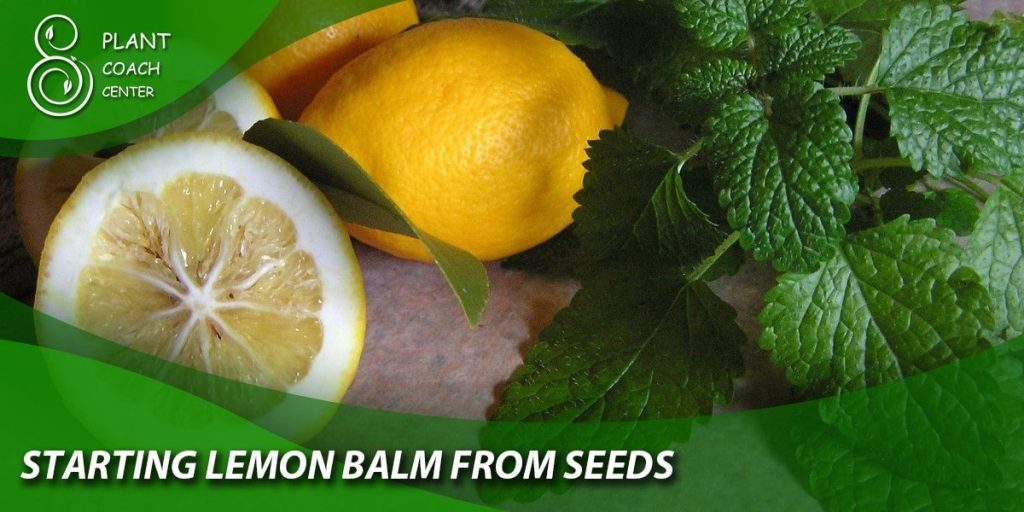
Starting lemon balm from seeds is an affordable and rewarding method of propagation. Follow these steps to ensure successful germination and seedling establishment:
5.1 Selecting Quality Lemon Balm Seeds
– Obtain lemon balm seeds from reputable suppliers or nurseries to ensure their viability and quality.
– Check the seed packet for information on the variety, germination rates, and any specific requirements.
5.2 Preparing the Soil and Seedling Containers
– Fill seedling trays or pots with a well-draining seed-starting mix or a combination of potting soil and vermiculite.
– Moisten the soil lightly before sowing the seeds to create an ideal environment for germination.
5.3 Sowing Lemon Balm Seeds
– Sow the lemon balm seeds on the soil surface, spacing them about 1 inch apart.
– Lightly press the seeds into the soil or cover them with a thin layer of vermiculite to improve moisture retention.
5.4 Care and Maintenance of Lemon Balm Seedlings
– Place the seedling trays or pots in a warm location with indirect sunlight or under grow lights.
– Maintain the soil moisture by misting or watering gently whenever the top inch of soil feels dry.
– Provide good air circulation to prevent damping-off disease.
– Once the seedlings develop their first true leaves, thin them out to one strong seedling per pot or space them appropriately in the seedling trays.
6. Propagating Lemon Balm through Cuttings
Propagating lemon balm through cuttings is another effective method to expand your lemon balm collection or share plants with others. Follow these steps for successful propagation:
6.1 Choosing the Right Time for Propagation
– Spring or early summer is the ideal time to take lemon balm cuttings when the plant is actively growing.
– Select healthy mother plants that exhibit vigorous growth and have not yet flowered.
6.2 Taking and Preparing Lemon Balm Cuttings
– Using clean and sharp garden shears or a knife, take 4-6 inch stem cuttings from the mother plant just below a node.
– Remove the lower leaves from the cuttings, leaving only a few leaves at the top.
– Dip the cut end of the stem in a rooting hormone powder to enhance root development (optional).
6.3 Rooting and Transplanting Lemon Balm Cuttings
– Insert the prepared lemon balm cuttings into a well-draining rooting medium, such as a mix of perlite and peat moss.
– Place the cuttings in a warm, partially shaded area or use a propagation tray with a clear plastic cover to maintain high humidity.
– Mist the cuttings regularly to keep the rooting medium moist but not waterlogged.
– After 3-4 weeks, the cuttings should develop roots. Gently tug on the cuttings to check for resistance, indicating the presence of roots.
– Once the roots are well-established, transplant the cuttings into individual pots or the desired garden location.
By following these propagation methods, you can multiply your lemon balm plants and enjoy an abundant supply of this delightful herb.
Propagating Lemon Balm through Cuttings
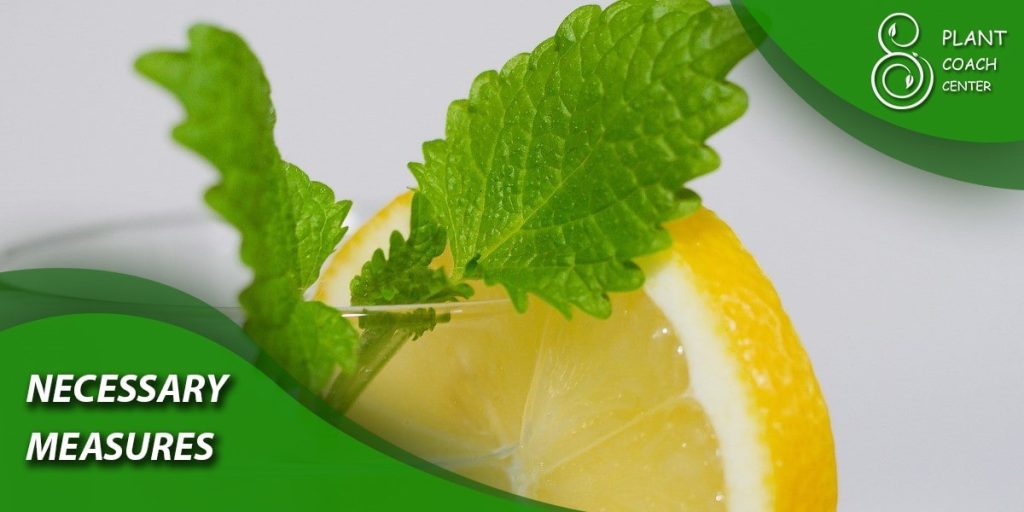
7. Essential Care Practices for Healthy Lemon Balm Plants
Proper care and maintenance are key to ensuring healthy growth and optimal productivity of your lemon balm plants. Pay attention to the following care practices:
7.1 Watering Lemon Balm
– Water lemon balm regularly to keep the soil consistently moist. Avoid overwatering, as it can lead to root rot.
– Provide deep, thorough watering rather than light, frequent watering to encourage deep root growth.
– Water in the early morning or late afternoon to minimize water loss through evaporation.
7.2 Fertilizing Lemon Balm
– Apply a balanced, slow-release organic fertilizer once in early spring to provide essential nutrients.
– Alternatively, use a liquid fertilizer diluted to half strength every 4-6 weeks during the growing season.
– Avoid excessive fertilization, as it can lead to lush foliage with reduced aromatic qualities.
7.3 Mulching and Weed Control
– Apply a layer of organic mulch, such as straw or wood chips, around the base of lemon balm plants to conserve moisture, suppress weeds, and regulate soil temperature.
– Regularly inspect the area for weeds and remove them promptly to prevent competition for resources.
7.4 Pruning and Harvesting Lemon Balm
– Prune lemon balm regularly to maintain its shape, promote bushiness, and prevent it from becoming leggy.
– Harvest the leaves as needed throughout the growing season, ensuring to leave enough foliage for the plant to continue thriving.
– Cut stems above a node to encourage branching and new growth.
Implementing these care practices will contribute to the overall health and longevity of your lemon balm plants, enhancing their productivity and aromatic qualities.
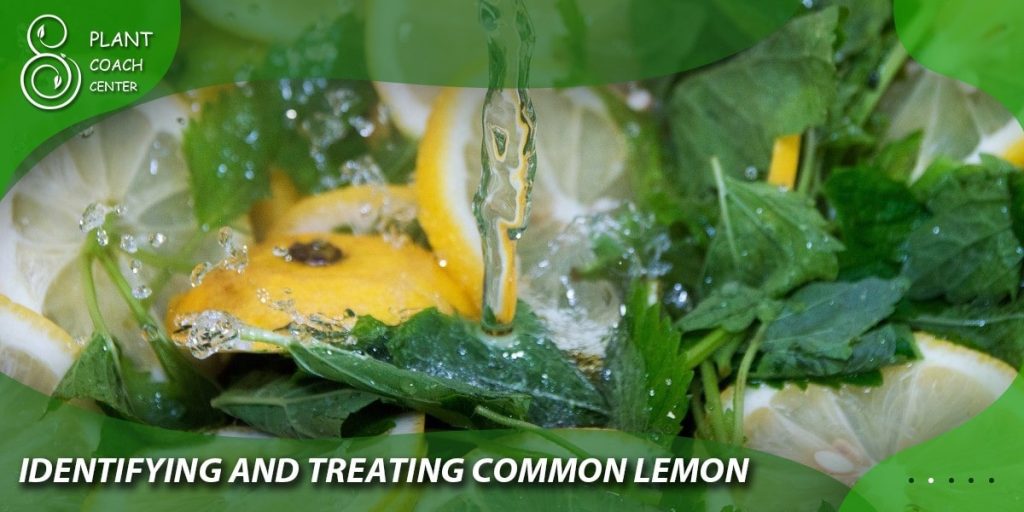
8. Identifying and Treating Common Lemon Balm Issues
Despitebeing a relatively resilient herb, lemon balm can occasionally encounter certain issues. Here are some common problems and their potential solutions:
8.1 Pests
– Aphids: Spray the affected plants with a strong stream of water to dislodge the aphids. Alternatively, use insecticidal soap or neem oil according to the product instructions.
– Spider mites: Rinse the plant with water regularly to reduce mite populations. Consider using insecticidal soap or neem oil if the infestation persists.
– Slugs and snails: Handpick them in the evening or use organic slug and snail bait around the plants.
8.2 Diseases
– Powdery mildew: Ensure good air circulation around the plants and avoid overhead watering. If necessary, apply a fungicide specifically formulated for powdery mildew according to the instructions.
– Root rot: Improve drainage and avoid overwatering. If root rot has already set in, it may be challenging to save the plant. Consider propagating new plants from cuttings or seeds.
– Leaf spot: Remove and destroy the affected leaves. Ensure proper spacing between plants to improve airflow and reduce humidity.
8.3 Environmental Stress
– Sunburn: Provide partial shade during the hottest parts of the day, especially in regions with intense sunlight.
– Heat stress: Ensure adequate watering during hot weather to prevent wilting and stress. Consider providing temporary shade if necessary.
– Cold damage: Lemon balm can tolerate light frosts but may suffer in harsh winter conditions. Consider covering the plants or moving containers indoors during extreme cold spells.
Conclusion
Lemon balm is a remarkable herb that offers a myriad of benefits and possibilities. Whether you grow it in your garden or purchase it from a local market, embracing the versatility of lemon balm can enhance your culinary creations, promote relaxation, and provide natural remedies.
From its refreshing lemony flavor and aroma to its calming and soothing properties, lemon balm has something to offer in various aspects of your life. Whether you choose to enjoy it as a delightful herbal tea, incorporate it into your favorite recipes, or explore its potential in natural home remedies, lemon balm can add a touch of brightness and wellness to your daily routine.
Remember to harvest and store lemon balm properly to preserve its flavor and aroma. Consider companion planting to benefit other plants in your garden and attract beneficial insects. By embracing the versatility of lemon balm, you can tap into its full potential and experience the joys it brings.
When should I plant lemon balm?
Spring or early summer.
What is the best time to plant lemon balm?
Late spring or early summer.
Can I plant lemon balm in the fall?
It's better to plant lemon balm in spring or early summer.
When is the ideal season for lemon balm planting?
Spring or early summer is the ideal time to plant lemon balm.


